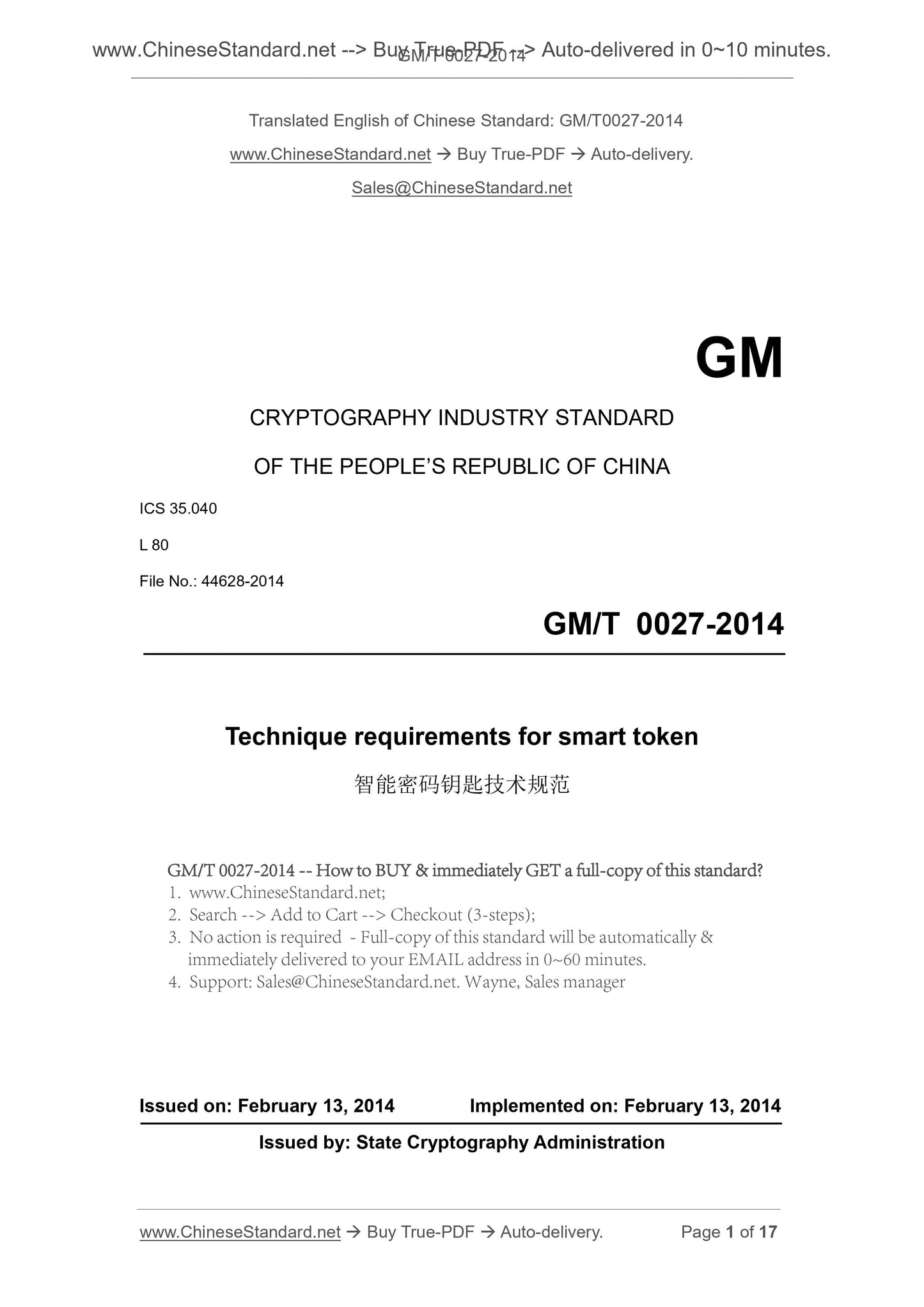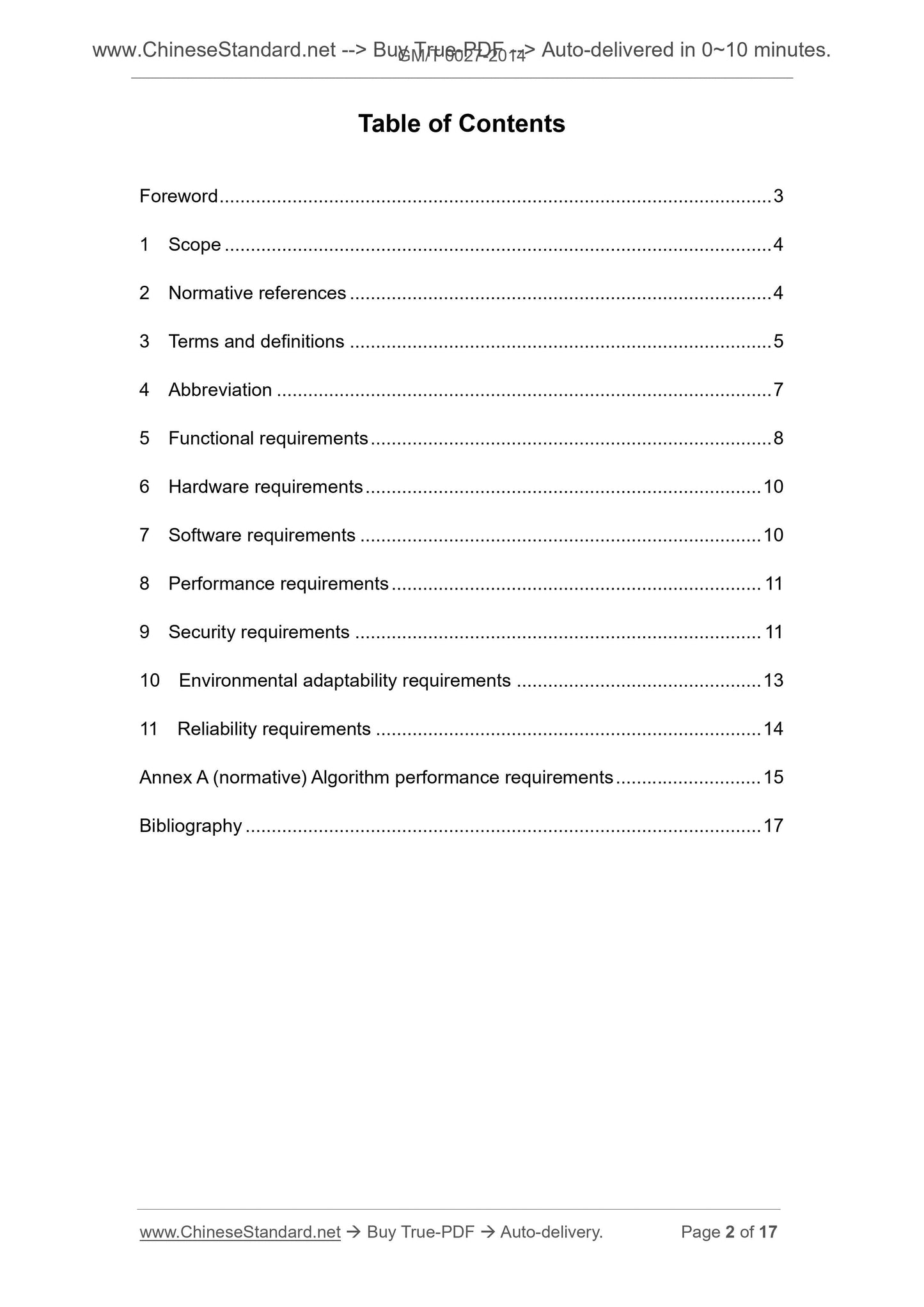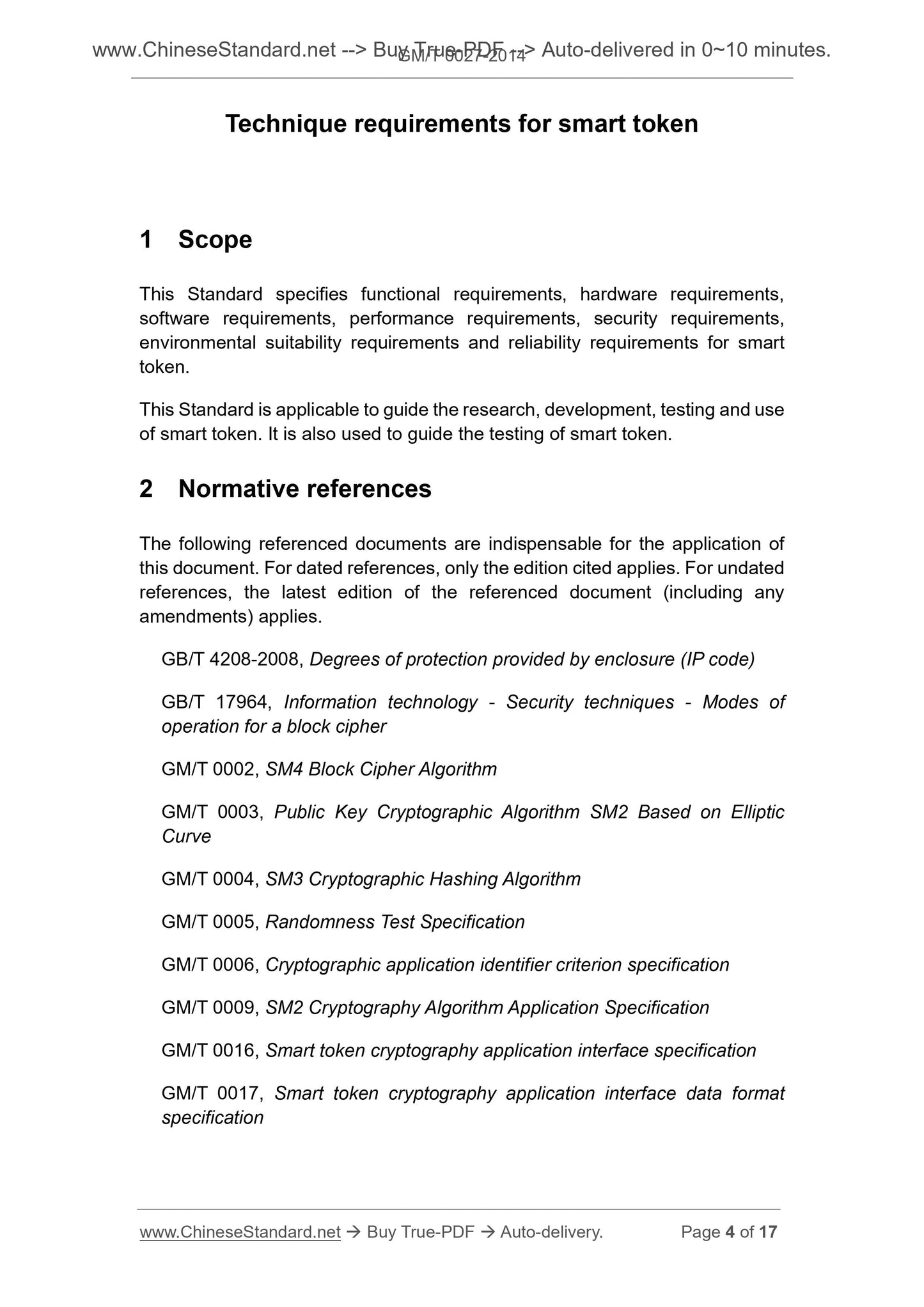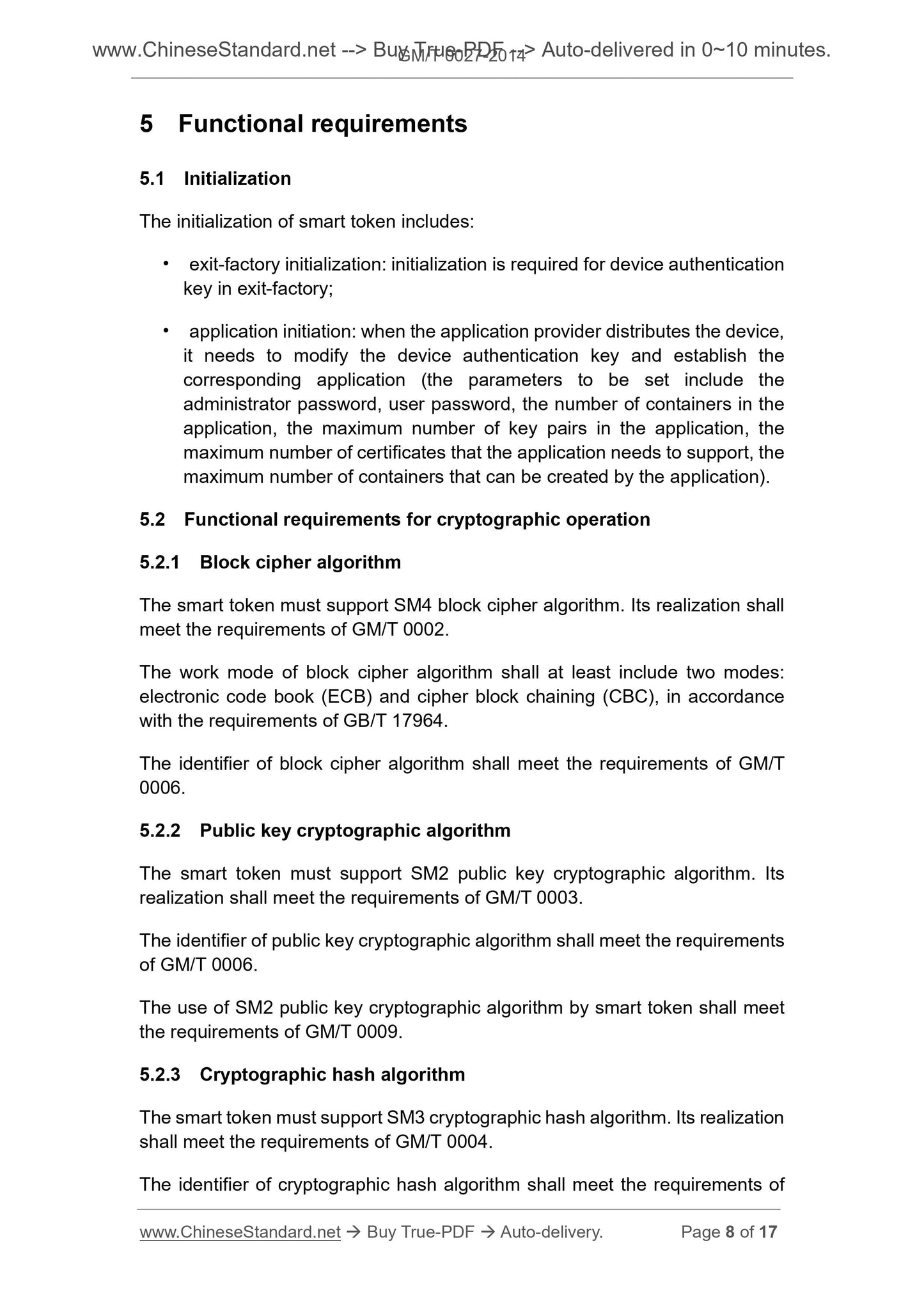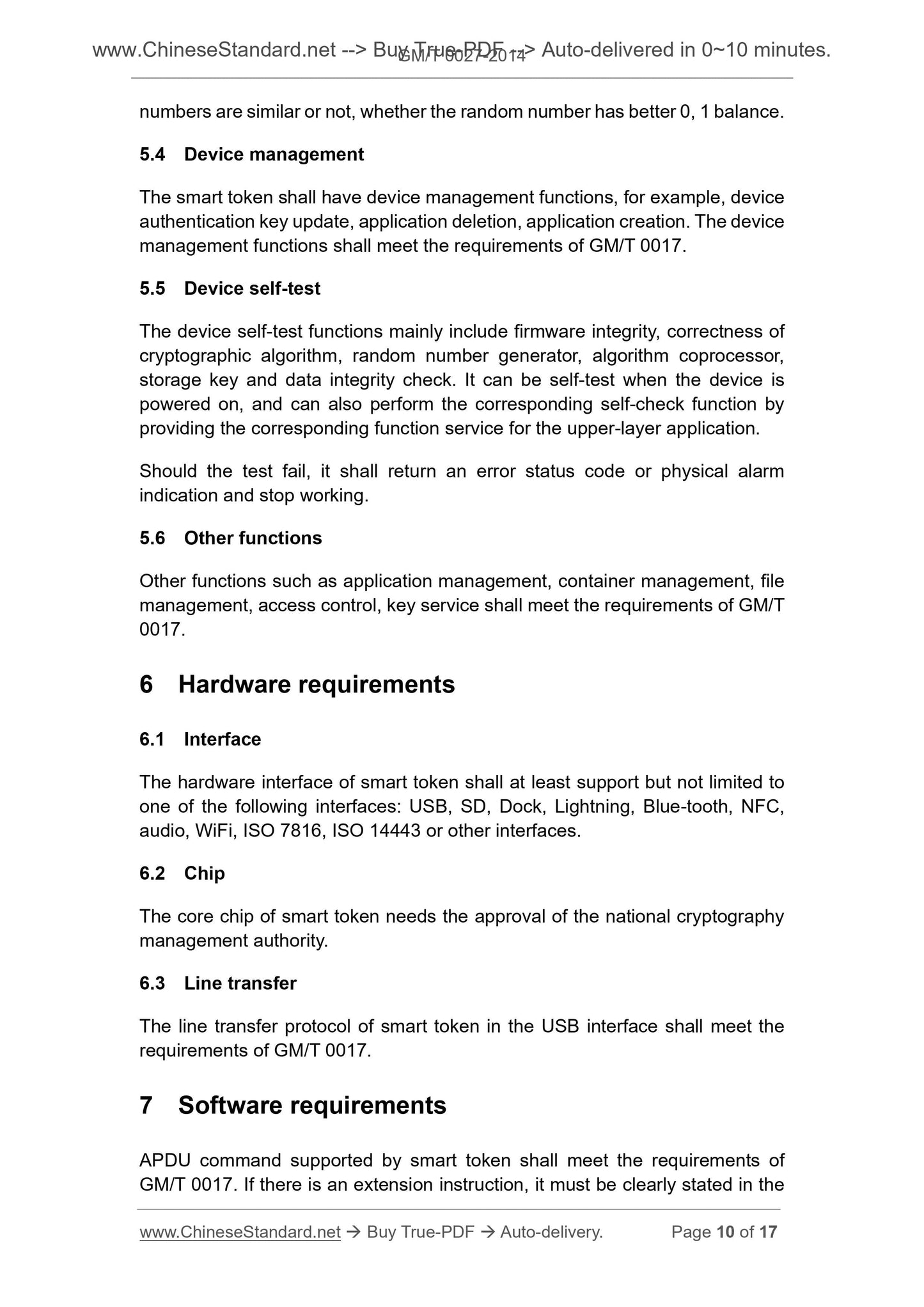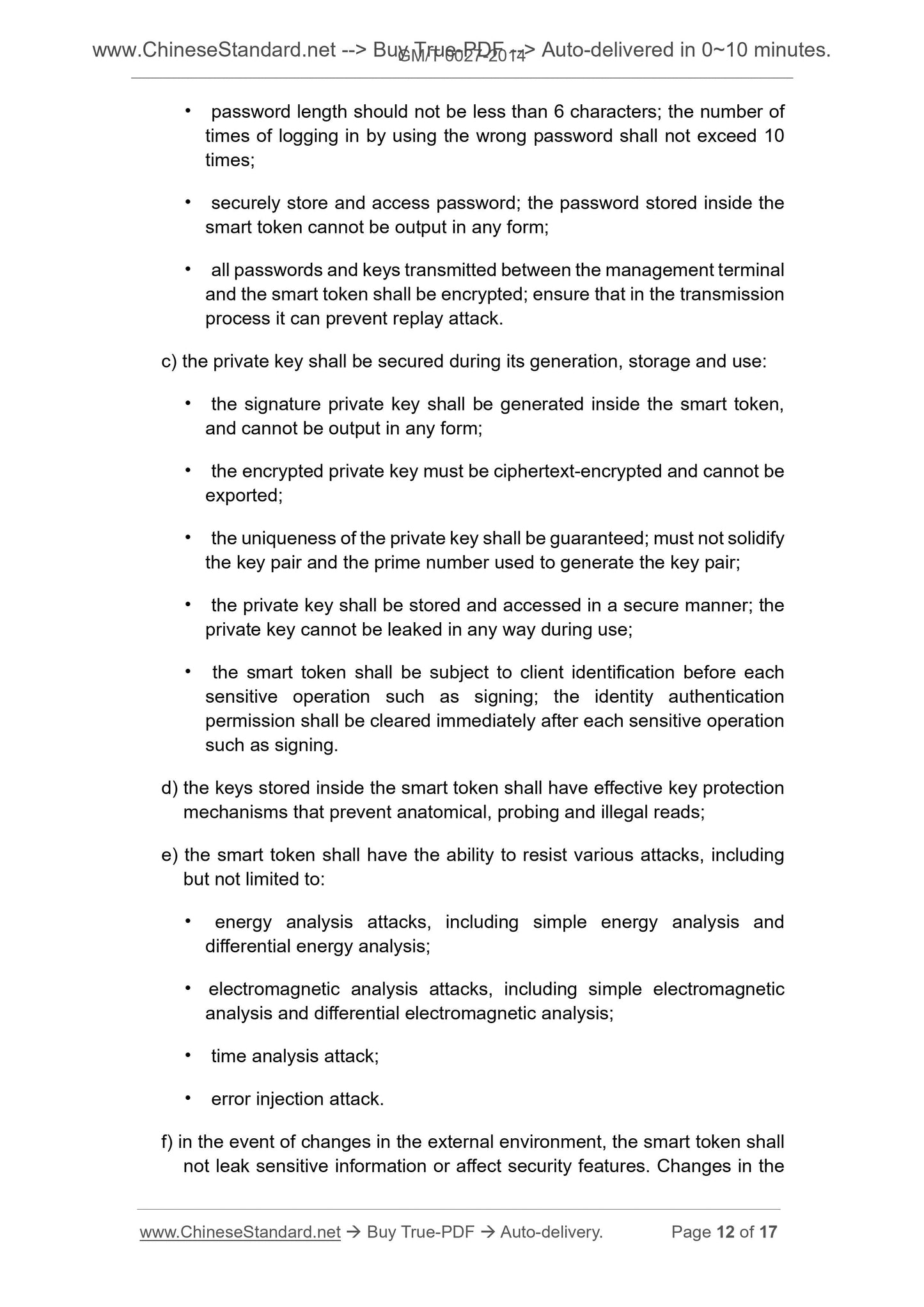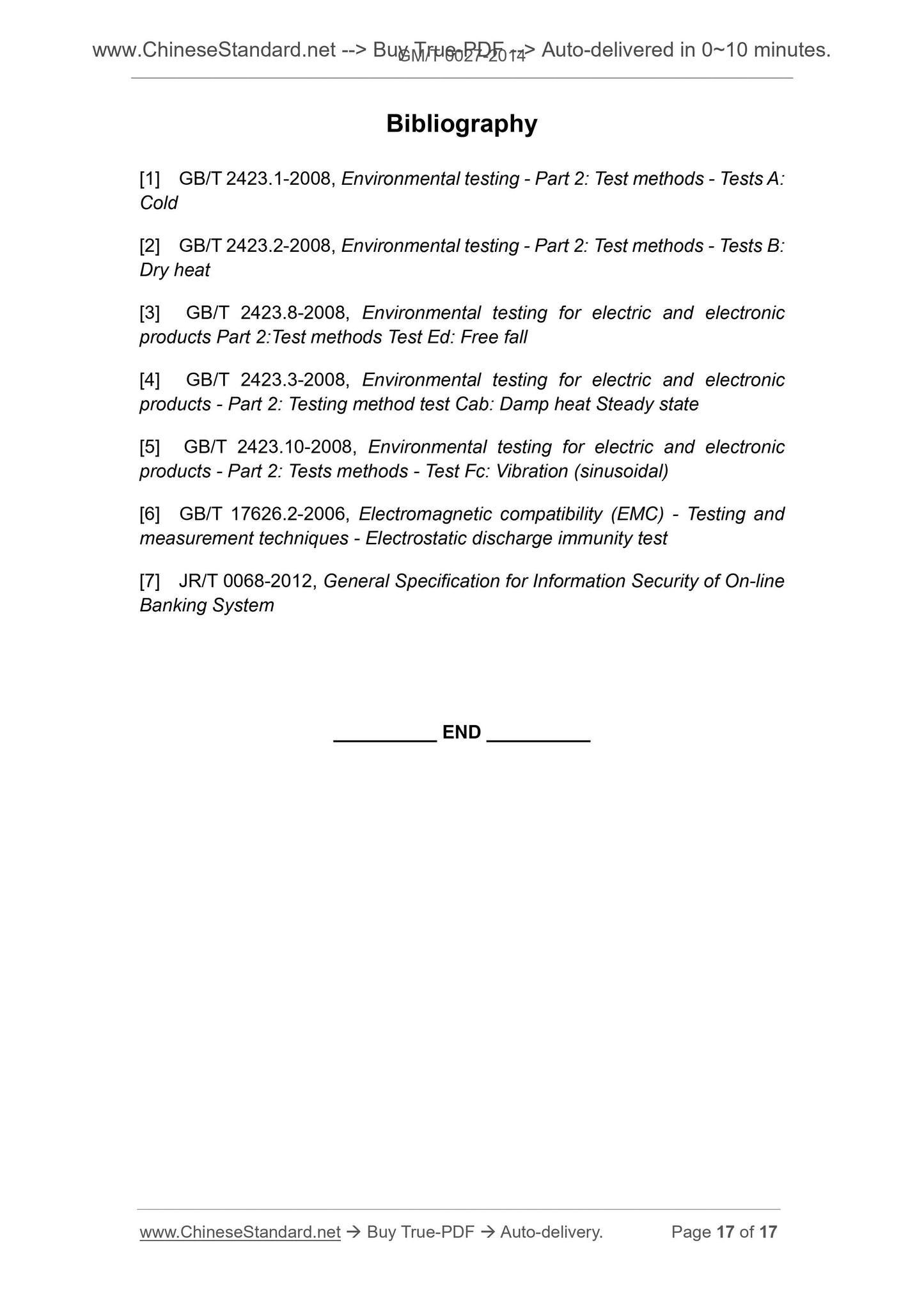1
/
of
7
www.ChineseStandard.us -- Field Test Asia Pte. Ltd.
GM/T 0027-2014 English PDF (GM/T0027-2014)
GM/T 0027-2014 English PDF (GM/T0027-2014)
Regular price
$150.00
Regular price
Sale price
$150.00
Unit price
/
per
Shipping calculated at checkout.
Couldn't load pickup availability
GM/T 0027-2014: Technique requirements for smart token
Delivery: 9 seconds. Download (and Email) true-PDF + Invoice.Get Quotation: Click GM/T 0027-2014 (Self-service in 1-minute)
Newer / historical versions: GM/T 0027-2014
Preview True-PDF
Scope
This Standard specifies functional requirements, hardware requirements,software requirements, performance requirements, security requirements,
environmental suitability requirements and reliability requirements for smart
token.
This Standard is applicable to guide the research, development, testing and use
of smart token. It is also used to guide the testing of smart token.
Basic Data
| Standard ID | GM/T 0027-2014 (GM/T0027-2014) |
| Description (Translated English) | Technique requirements for smart token |
| Sector / Industry | Chinese Industry Standard (Recommended) |
| Classification of Chinese Standard | L80 |
| Classification of International Standard | 35.040 |
| Word Count Estimation | 16,192 |
| Date of Issue | 2/13/2014 |
| Date of Implementation | 2/13/2014 |
| Quoted Standard | GB/T 4208-2008; GB/T 17964; GM/T 0002; GM/T 0003; GM/T 0004; GM/T 0005; GM/T 0006; GM/T 0009; GM/T 0016; GM/T 0017 |
| Regulation (derived from) | The industry standard for the record Notice 2014 No. 4 (No. 172 overall) |
| Issuing agency(ies) | State Administration of Cryptography |
| Summary | This standard specifies the smart password key functional requirements, hardware requirements, software requirements, performance requirements, safety requirements, environmental adaptability and reliability requirements and other relevant content. This s |
Share
